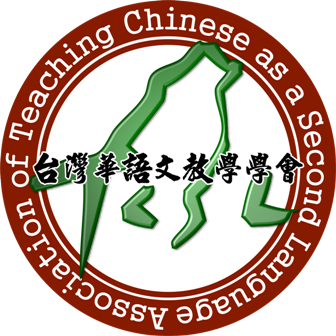《臺灣華語教學研究》期刊2018年第2期(總第17期)徵稿
特刊徵稿主題:語料庫與華語教學
(Corpora and Teaching Chinese as a Second Language)
特約主編:陶紅印 總編輯: 鄭錦全
~本期繼續歡迎一般領域論文投稿,並新增特定主題徵稿~
說明:
隨著電子科技的發達,數字化的語料庫作為新興的研究工具已經為語言學和應用語言學的各個領域帶來新的視點和資源。縱觀目前學界研究現狀,華語語料庫的建置已經初有成效,各類大小規模的語料庫不斷出現,研究成果也在不斷創新。然而在華語教學界,有系統地討論語料庫在語言教學方面的應用,尤其是課堂中應用的案例尚不多見。有鑑於此,本刊特別設立專刊,報導語料庫在華語教學研究和實踐中的最新研究成果。
徵稿範圍:
- 適用於華語教學的語料庫的構建策略與成果
- 基於語料庫的教學策略
- 基於語料庫語體比較與教學應用
- 學習者語料庫的建立與開發
- 語料庫與各類語言能力的教學:語音、詞彙、語法、語義、篇章和語用等
- 基於語料庫的教材、工具書的開發利用
- 多媒體語料庫的開發
- 其他相關議題
投稿須知:
投稿截止:本期特刊論文自即日起至2018年8月31日前投稿,先到先審。
投稿信箱:tjcsl@ntnu.edu.tw ,來信請註明「投稿《臺灣華語教學研究》」。
- 本刊為雙向匿名審稿之學術期刊,中英文稿件均接受。稿件須未曾投稿至其他刊物或在其他地方出版。
- 為配合匿名審稿,論文內文不得出現任何可辨識作者的文字,並依照本刊的格式規定編輯文稿。
- 投稿前請填寫作者資料表及著作權同意書,這兩份資料於投稿時一起繳交。
- 投稿文章電子檔應為MS WORD,編碼為Big-5、Unicode 或 GB 須全文一致。
- 文長不超過30頁(A4)或兩萬字。須附中英文摘要(約四分之一頁至半頁),中英文關鍵詞不超過六個。
投稿須知
- 本刊為雙向匿名審稿之學術期刊,中英文稿件均接受。稿件須未曾投稿至其他刊物或在其他地方出版。
- 為配合匿名審稿,論文內文不得出現任何可辨識作者的文字,作者資料請另附,包含:論文中、英文標題,作者全名(中、英文),任職單位(中、英文)及聯絡方式。
- 投稿文章的電子檔應為MS WORD,編碼為Big-5、Unicode 或 GB 須全文一致。
- 文長不超過30頁(A4)或兩萬字。須附中英文摘要(約四分之一頁至半頁),中英文關鍵字至多不超過六個。
- 投至本刊的稿件概不退還,請自行留存底稿。
- 中文採用細明體、標楷體或宋體,英文採用Times New Roman。當頁註腳字體為新細明體,但請少用註腳,以增進正文閱讀,如有論證,請在正文中陳述。
- 字體大小和標題形式要求:
| 文章題目 | 14號,加粗 |
| 所有標題與小標題 | 13號,加粗 |
| 本文 | 12號,勿加粗 |
| 腳註 | 10號,勿加粗 |
| 圖表說明文字 | 10號,加粗 |
- 所有標題編號請依據範例,不需縮排(範例:1,1,2,2.1,2.1.1 以下類推)。例句編號形式如(1)(2),縮排兩字元。
- 參考書目應該列在正文之後,中文論文中的中英文書目應分別編排,先中文後英文:中文書目按照作者姓氏筆劃排列;英文書目則按照作者姓氏字母排列。英文論文中的中文書目作者以拉丁字母拼寫列出,格式參看本期論文。
- 標點符號必須標在格內。除破折號及省略號應各占兩個格位外,其他標點符號各占一個格位。書名用雙角括弧《》、篇名用單角括弧〈〉。行文中出現引文,應加單引號「」,如引文中又有引文,後者用雙引號『』。
- 拉丁字母書名用斜體字,如:Hong Lou Meng [《紅樓夢》A Dream of Red Mansions]。 中文拼音請用漢語拼音,若作者自有的姓名拼法、習慣拼法或學術界廣為認同的舊有拼法應予尊重,如趙元任應作 Chao Yuen Ren。
Submission Guidelines
- All articles in this journal must undergo anonymous peer-reviews. Articles in both Chinese and English are accepted. Articles submitted to other publications or published elsewhere will not be considered.
- In order to ensure that peer review is anonymous, no information that may reveal the identity of the author should be included in the article. Information about the author should be sent separately. This includes the Chinese and English titles of the article, the author’s institution, and contact information.
- The electronic version of the article should be an MS Word document, and the encoding should be Big-5, Unicode or GB. Only one encoding may be used in a single article.
- The article should be no longer than 30 pages (on A4 paper), or 20,000 Chinese characters. Chinese and English abstracts must be included (approximately a quarter of a page to half a page long). There may be no more than 6 Chinese and English keywords.
- Documents will not be returned once they have been submitted. Please keep your own copy.
- Chinese should be written in MingLiU, KaiU or SimSun fonts. English should be in Times New Roman. Same-page notes should be in PMingLiU.
- Font size and heading formatting requirements are as follows:
| Title | 14 points, bold |
| Headings | 13 points, bold |
| Main text | 12 points, no bold |
| Notes | 10 points, no bold |
| Captions | 10 points, bold |
- All headings should be numbered as follows: 1, 1.1, 2, 2.1, 2.1.1, etc. Headings do not need to be indented. Example sentences should be indented two spaces, and numbered as follows: (1), (2), etc.
- A list of references should appear at the end of each article, with Chinese and English sources listed separately, Chinese before English. Chinese sources should be sorted according the number of strokes in the author’s surname; English references should be in alphabetical order.
- Titles should be in italics, for example: Dream of Red Mansions. It is recommended that Hanyu Pinyin be used for romanizations. Authors may use whatever romanization they typically use for their own names. Romanizations that are commonly used or widely recognized in academia are also acceptable, e.g.: Chao Yuen Ren.
